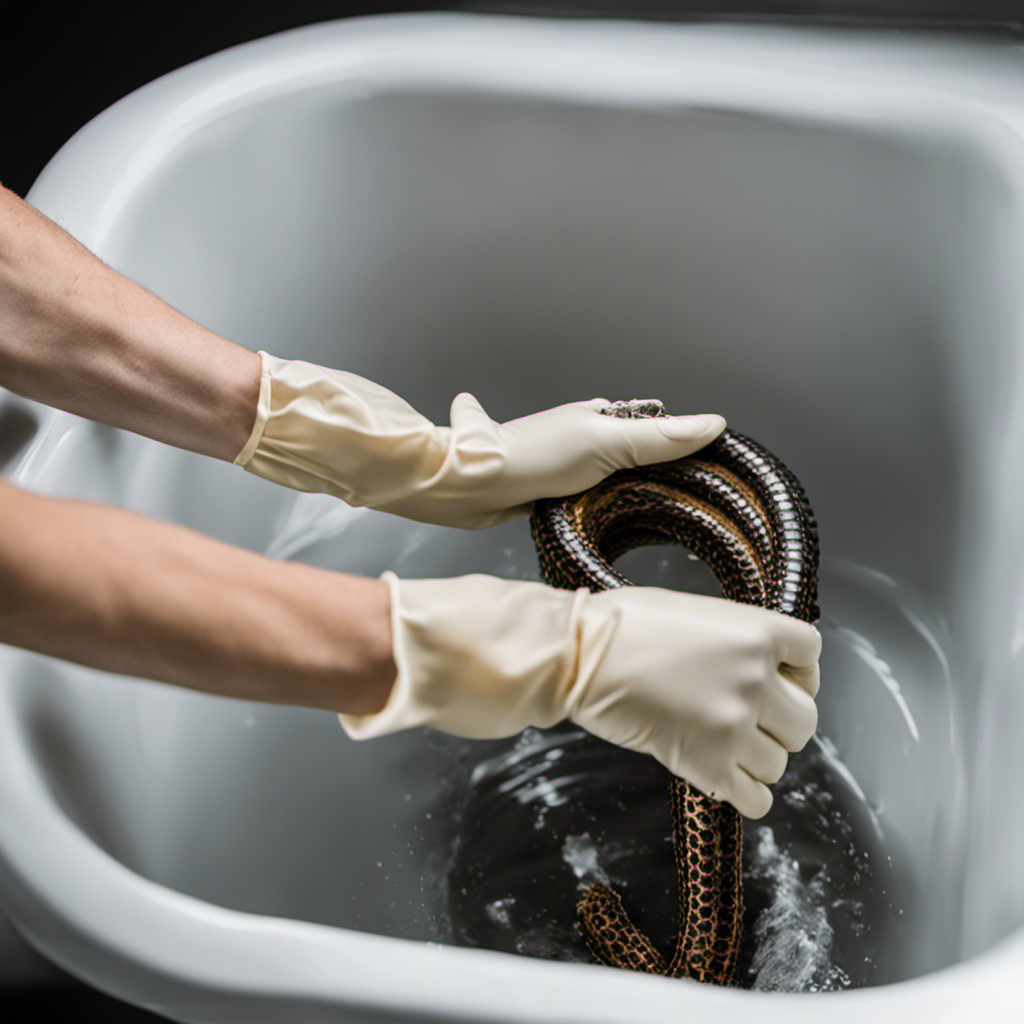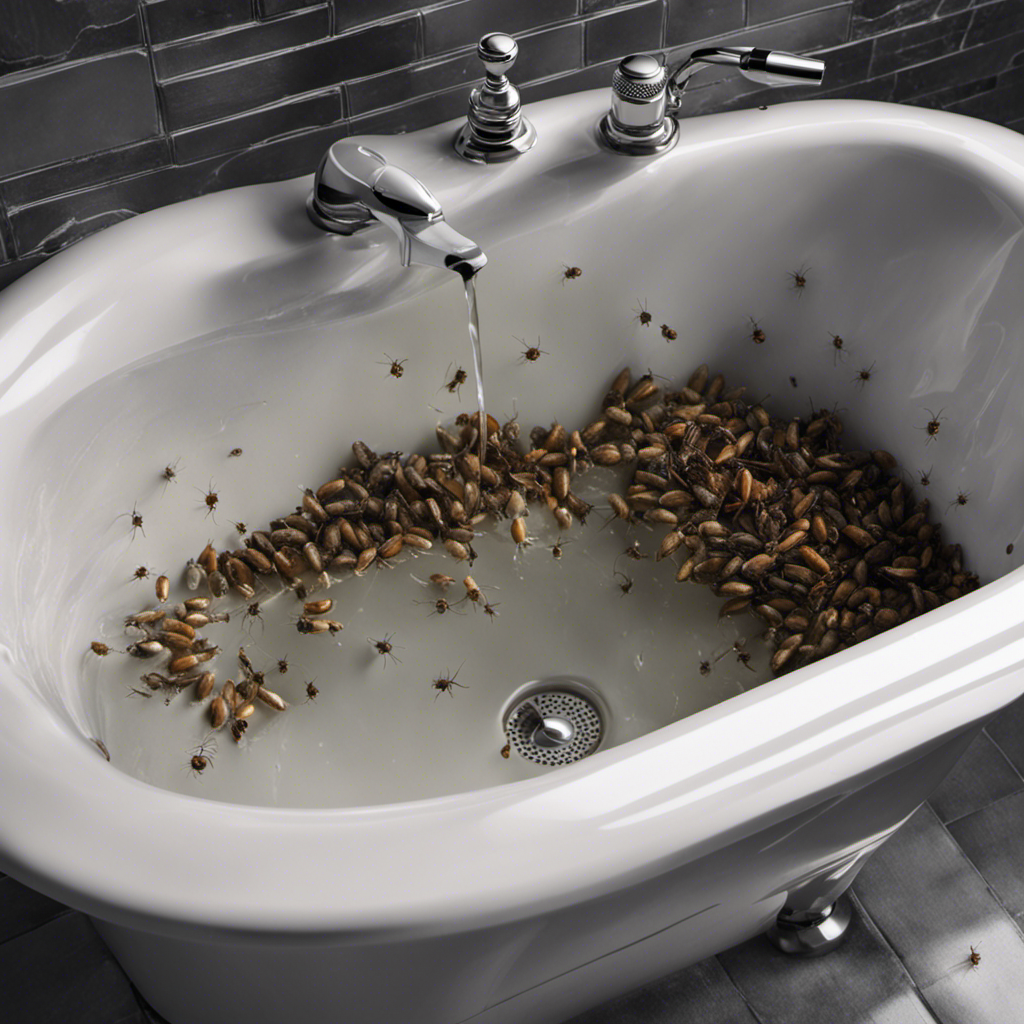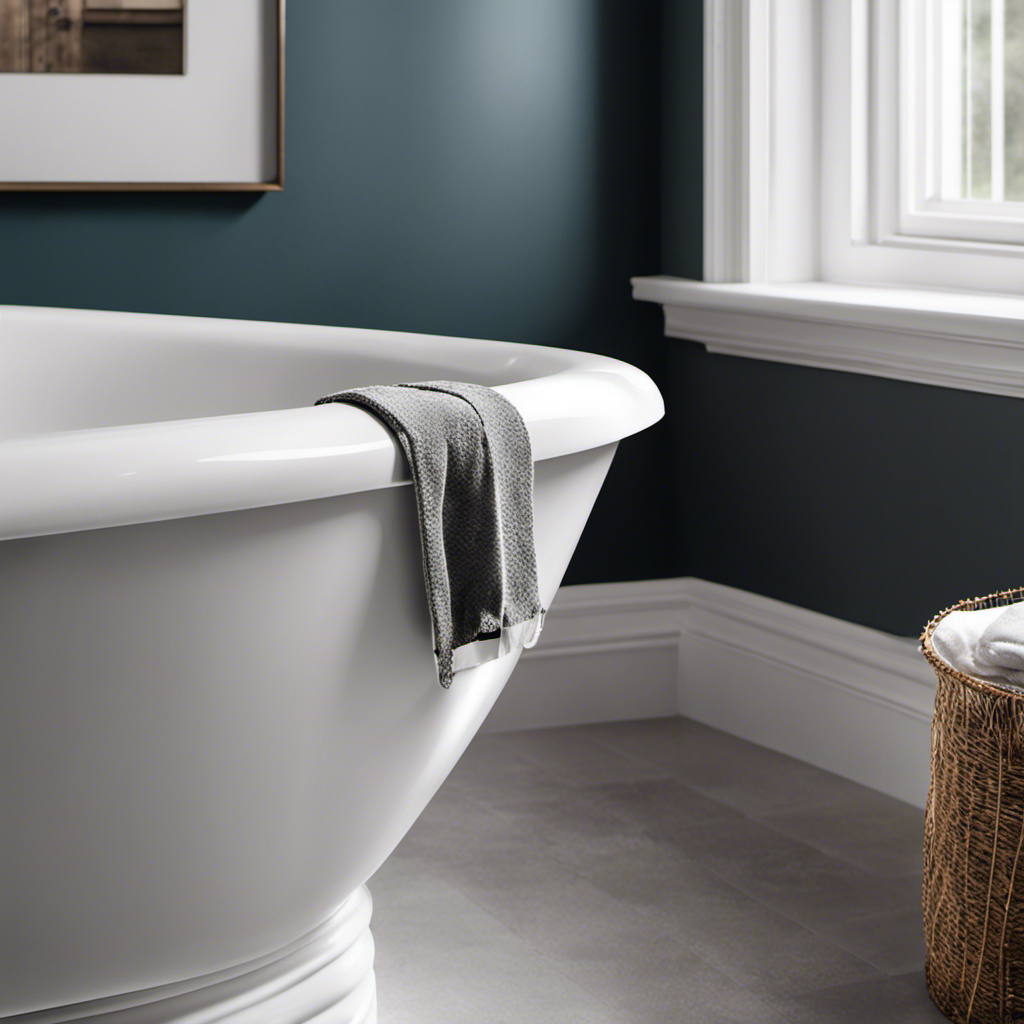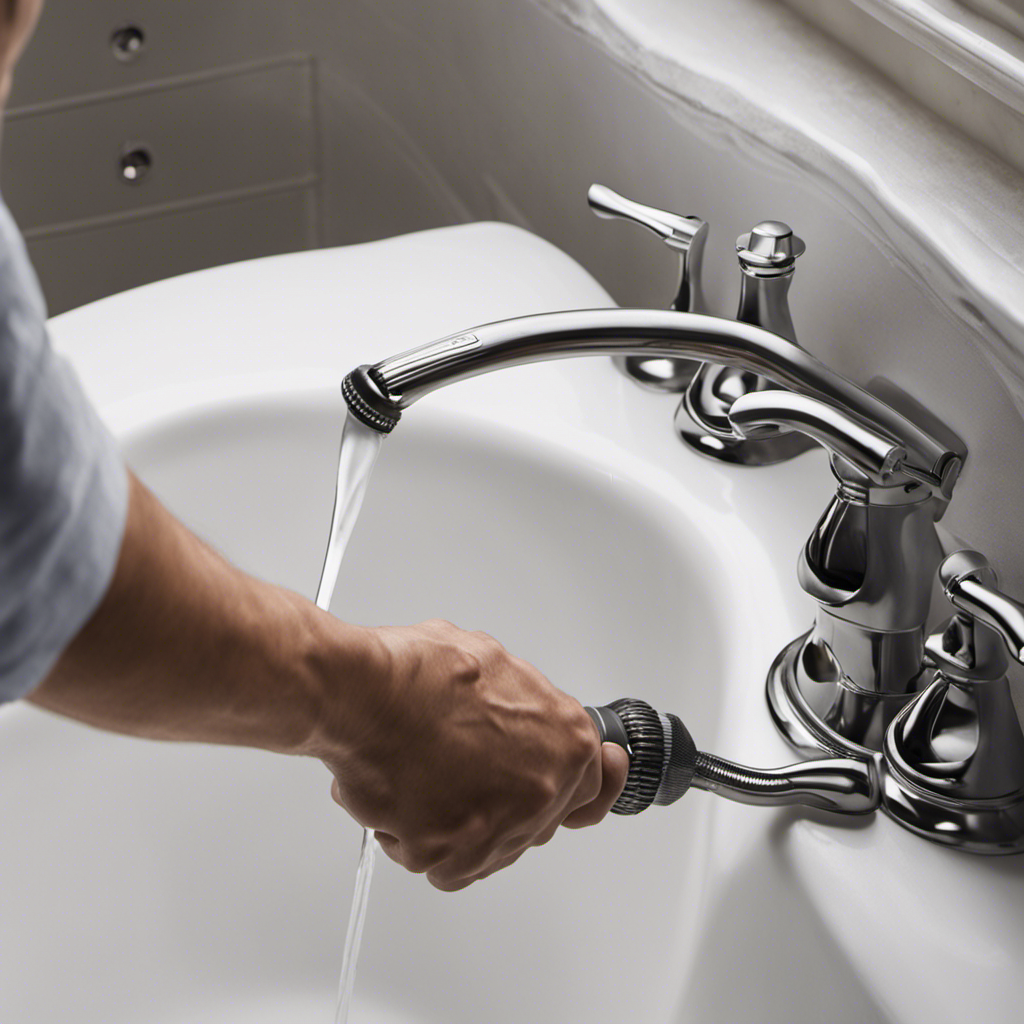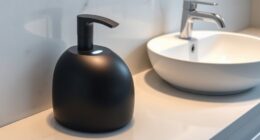I’ve been there – standing ankle-deep in water as the bathtub drain stubbornly refuses to do its job. But fear not! In this article, I’ll show you how to clean your bathtub drain like a pro.
We’ll dive into the inner workings of the drain system, gather the necessary tools, and remove those pesky hair and debris clogs.
With a few homemade solutions and regular maintenance, you’ll have a clean and functioning drain in no time.
Let’s get started!
Key Takeaways
- The drain system components in a bathtub include the drainpipe, drain stopper, and drain cover.
- Common problems with bathtub drains include clogs from hair, soap residue, and mineral buildup.
- Essential tools for cleaning a bathtub drain include gloves, a plunger, and a bucket.
- Homemade solutions like baking soda and vinegar can be used to clear clogs in the bathtub drain.
Understanding the Drain System in Your Bathtub
Understanding the drain system in your bathtub is crucial to effectively clean it.
When it comes to bathtub drain installation, there are a few key components to be aware of. The drain itself consists of a drainpipe, a drain stopper, and a drain cover.
The drainpipe is responsible for carrying water out of the tub and into the plumbing system. The drain stopper is used to prevent water from flowing down the drain, allowing you to fill the tub. The drain cover serves as a barrier, preventing debris from clogging the drain.
Common bathtub drain problems include clogs caused by hair, soap residue, and mineral buildup. By familiarizing yourself with the drain system, you can identify and address these issues, ensuring a clean and functional bathtub drain.
Gathering the Necessary Tools and Materials
To gather the necessary tools and materials, you’ll need a pair of gloves, a plunger, and a bucket. These items are essential for cleaning a clogged drain in your bathtub.
Gloves will protect your hands from any dirt or bacteria that may be present.
The plunger is a handy tool for dislodging any blockages in the drain. With its rubber suction cup, it creates a vacuum and pushes air or water through the pipes, clearing the clog.
The bucket is useful for collecting any water that may spill out during the cleaning process.
While cleaning your drain is a great way to prevent future clogs, it’s important to know when it’s time to call in professional plumbers. If you encounter a stubborn or recurring clog, it may be a sign of a more significant issue that requires professional expertise.
Removing Hair and Debris From the Drain
When removing hair and debris from your drain, it’s important to use a drain snake or a wire hanger to dislodge the blockage. These tools are effective at reaching deep into the drain and pulling out any accumulated hair and debris.
To prevent future clogs, it is recommended to use drain covers specifically designed for hair removal. These covers have small holes that allow water to flow freely while trapping hair and preventing it from going down the drain. By regularly cleaning these drain covers, you can minimize the amount of hair that accumulates in your drain, reducing the risk of clogs.
Now that we have removed the hair and debris from the drain, let’s move on to clearing clogs with homemade solutions.
Clearing Clogs With Homemade Solutions
Once you’ve cleared the hair and debris from your drain, you can try using a mixture of baking soda and vinegar as a homemade solution to clear clogs. Here are some unclogging techniques using natural drain cleaners:
- Pour half a cup of baking soda down the drain.
- Follow it with half a cup of vinegar.
- Let the mixture sit for about 30 minutes, allowing it to break down the clog.
- Flush the drain with boiling water to wash away any remaining debris.
This combination of baking soda and vinegar creates a chemical reaction that helps dissolve blockages and break down organic matter. The baking soda acts as a mild abrasive, while the vinegar’s acidity helps remove grease and grime.
This natural solution is effective for minor clogs and can be repeated as needed. Remember to use caution and avoid using this method if you have recently used commercial drain cleaners, as the combination of chemicals can be dangerous.
Maintaining a Clean and Functioning Drain
Regularly pouring a mixture of baking soda and vinegar down your bathtub’s drain can help prevent clogs and keep it functioning properly. However, even with regular maintenance, there may still be the need for professional drain cleaning services to ensure the longevity of your drain system.
These services can help in preventing future drain issues that may arise due to stubborn clogs or build-up that cannot be cleared by homemade solutions alone. Professional drain cleaning services utilize specialized tools and techniques to thoroughly clean your drain and remove any obstructions or debris that may be causing problems.
Conclusion
In conclusion, keeping the drain in your bathtub clean and functioning is essential for a smooth and hassle-free bathing experience.
By understanding the drain system, gathering the necessary tools, and using homemade solutions, you can easily remove hair and debris and clear any clogs that may occur.
Remember, prevention is key, so regular maintenance is crucial.
As the saying goes, ‘A stitch in time saves nine,’ so don’t neglect your drain and take the necessary steps to keep it in optimal condition.
